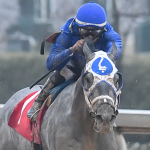
Preakness Quick Sheet: Get to Know the 2021 Preakness Horses

I live in a town where “11 to 10” does not mean the time of day. In Las Vegas, we have legal sports gambling as well as simulcasting of nearly every racetrack in the country 364 days a year. Thank goodness Christmas Day is dark.
A professional sports bettor practices an oath that most professional horse bettors abstain from with a passion. The 11 to 10 represents the odds on nearly all sports wagers in Las Vegas. It has been this way for a long, long time.
What this means to the betting newcomer is this: you wager $11 to win $10 on a team or side to win. The $1 difference represents the vigorish – “the vig” for short – which is the hold or takeout for the sports book. Most folks mistakenly call the sports book hold 10 percent because of the 11-to-10 odds.
However, the vig is paid only by the losing side, so in reality it is about a 5 percent hold. Thus, to break even a sports bettor must win about 52.5 percent of his bets.
Professional sports bettors live and die by that 11 to 10. They may play around with parlays, teasers and the like, but the straight bet comes first to guarantee a profit should their team or side win.
In horse racing, professional players do the exact opposite. When was the last time you knew a horseplayer who was willing to take even money or to bet favorites religiously? The horseplayer who plays favorites or “the chalk” is actually frowned upon. He is considered a dinosaur in the racing game.
If I were the commissioner of racing for a day, I would do all I could to make this kind of player happy. But that is a story for another time.
Big horse gamblers utilize a dizzying array of multi-horse and/or multi-race wagers to maximize potential profits on a horse or horses they like.
This mentality is characterized by the horse racing axiom of “betting a little to win a lot.”
I credit author and handicapper Steven Crist for helping grow this style of horse play in his 2006 book “Exotic Betting.”
His philosophy was that in multi-race wagers you pay the takeout – which in horse racing goes to the track, the purse fund, and for taxes – only once. For example, if you liked three horses in a row to win, the win takeout would be extracted three different times if you bet each horse separately.
Meanwhile, if you bet a Pick 3 using all three horses you would only be taxed once. Crist’s book would show you how to utilize other runners too. He would grade contenders as A, B and C horses thus you could build tickets to “almost be right” and still win.
I thought this was a worthwhile discussion with the Super Bowl coming up soon. You will hear and read about sports gamblers betting five-, six- and even seven-figure amounts on a team to beat the point spread.
I think that horseplayers should not summarily dismiss betting on favorites to win depending on the situation. I do practice in real life the old Chinese proverb of “better a short price than a long face” from time to time.
For example, lots of folks loved Gun Runner to win the 2017 Breeders’ Cup Classic. Do you recall that he paid $6.80 to win? A sports bettor would be throwing bricks of money over the ticket counter if he could get nearly 5-2 odds on a team that he loved.
However, we horseplayers constantly try and turn a molehill into a mountain using exotic wagers. When it works, it can be wonderful. But other times it can leave us with a long face.
Richard Eng is the author of “Betting on Horse Racing for Dummies,” an introductory book for newcomers to the sport of horse racing. For two decades, he was the turf editor and handicapper for the Las Vegas Review-Journal. He still handicaps the Southern California tracks and his picks are for sale at www.racedaylasvegas.com. You can email him at rich_eng@hotmail.com and follow him on Twitter at @richeng4propick and on Facebook.com.